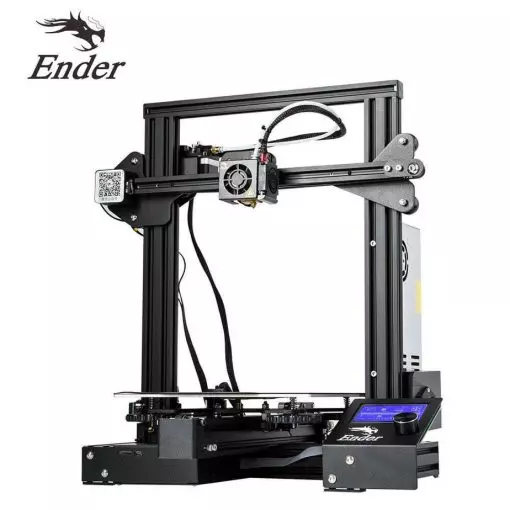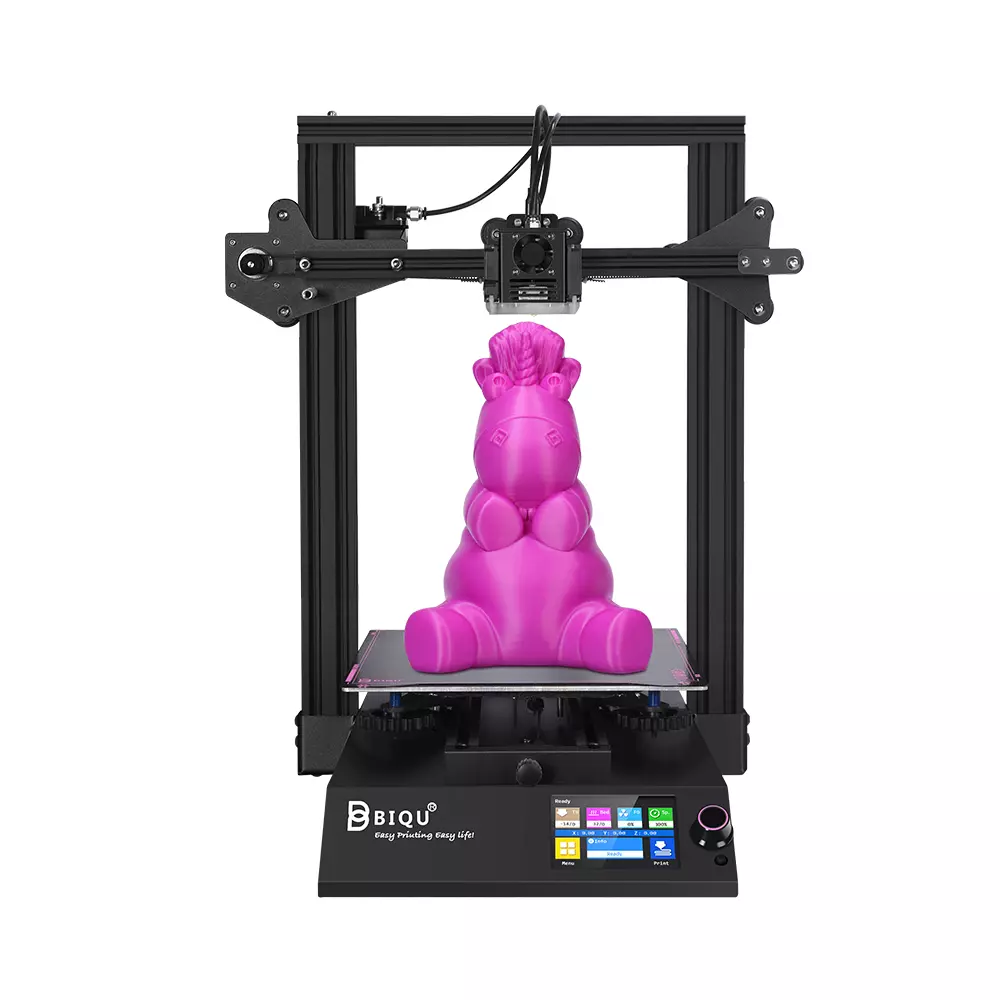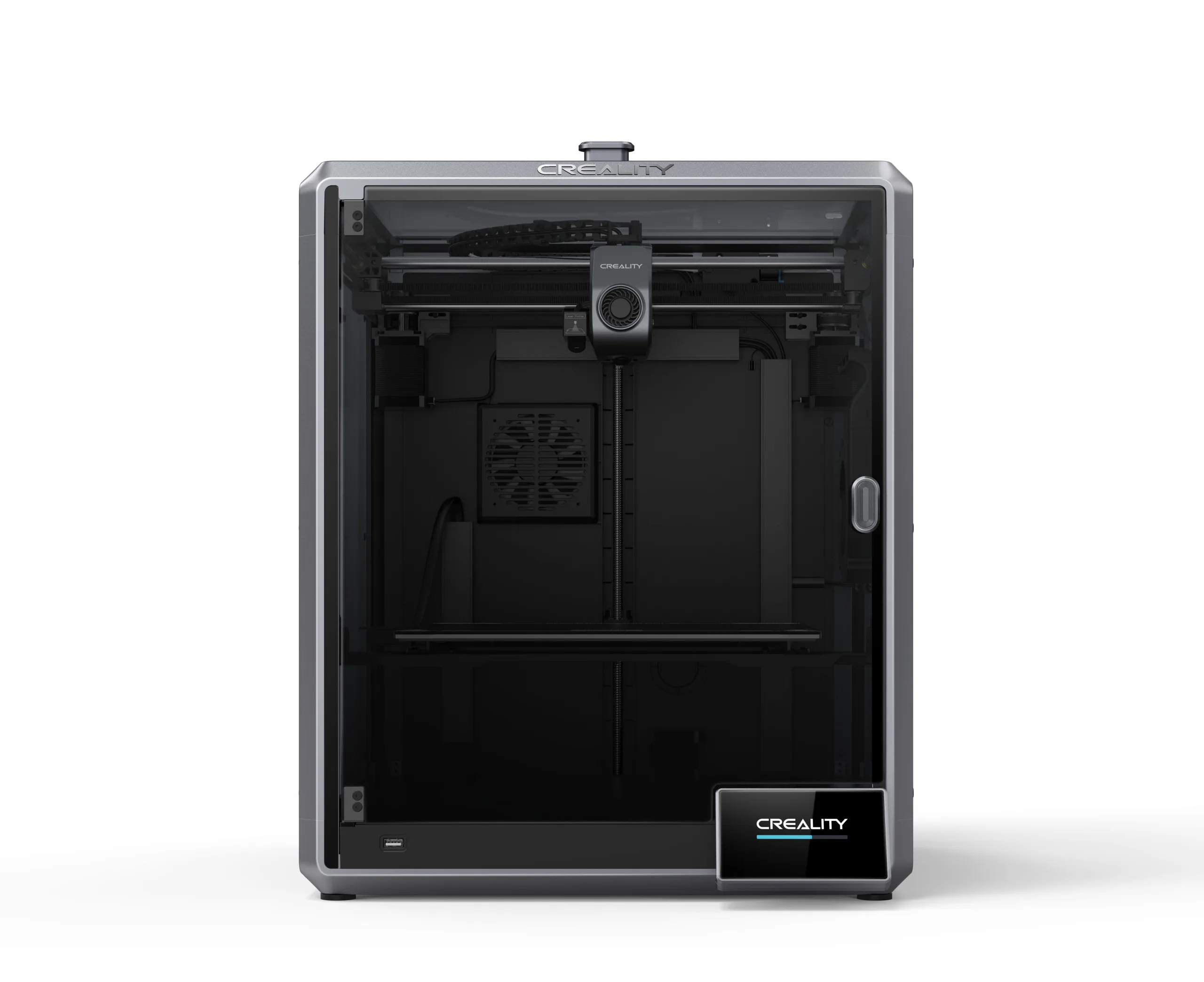Compare Ender 3 vs BIQU B1 vs K1 Max
Comparison between the best 3D printers
Choose the best 3D printer at the best price. The cheapest 3D printers are here.
Buy a 3D printer here with 3D Fila.
 |
 |
 |
|
| Model | Ender 3[BUY Ender 3] |
BIQU B1 |
K1 Max[BUY K1 Max] |
| Printing Material | Filament | Filament | Filament |
| Estimated price | $210,00 | $269,00 | $1300,00 |
| Fabricante | Creality 3D | BigTreeTech | Creality 3D |
| Release Year | 2018 | 2020 | 2023 |
| Print Volume [mm] | 220x220x250 | 235x235x270 | 300x300x300 |
| Printer Size [mm] | 440x440x465 | 412x402x492 | 435x462x526 |
| Weight [kg] | 6,62 | 8,00 | 18 |
| Power Loss Recovery | NO | YES | YES |
| Enclosed printer | NO | NO | NO |
| Bed Leveling | Manual | Manual | Automatic |
| Filament End Sensor | NO | YES | YES |
| Bed type | Heated | Heated | Heated |
| Power supply system | Bowden | Bowden | Direct Drive |
| Standard nozzle | 0,4 | 0,4 | 0,4 |
| Maximum Nozzle Temperature [°C] | 255 | 250 | 300 |
| Maximum Bed Temperature [°C] | 110 | 100 | 100 |
| Maximum printing speed [mm/s] | 180 | 100 | 600 |
| Filament holder | YES | YES | YES |
| Camera for supervision | NO | NO | YES |
| Recommended filaments | PLA, TPU, ABS, PETG | PLA, TPU, ABS, PETG | ABS, PLA, PETG, TPU, PA, ASA, PC, PLA-CF, PA-CF, PET-CF |
| Recommended slicers | Cura, Simplify, Slic3r | Cura, Simplify, Slic3r | Creality Print, Cura, Simplify, Slic3r, IdeaMaker e outros |
| Maximum Resolution [mm] | 0,1 | 0,1 | 0,1 |
| Processor | 8 bits | 32 Bits BTT SKR V 1.4 | |
| Display | Mono | Touchscreen TFT 3,5'' | Display touchscreen 4,3'' |
| Power Supply | 24V / 270W | 24V / 360W | |
| Connectivity | SD / USB | SD / USB | USB / Wi-Fi / Ethernet |
| Operating systems | Windows, Mac, Linux | Windows, Mac, Linux | Windows, Mac, Linux |
| Date of registration in the system | 2021-04-13 | 2021-04-14 | 2023-12-01 |
| Release date | 2018 | 2020 | 2023 |
| Extra features | The Ender 3 V1 is a DIY assembly 3D printer, a sales leader since 2017, standing out for its cost-benefit. With a wide printing capacity, it has a CNC machined structure for precision and stability. It offers high-precision prints with low noise, thanks to its innovative V-profile and pulleys. It has a self-adhesive magnetic platform for easy removal of models and excellent adhesion. The Ender 3 heats up quickly, reaching 100°C in 5 minutes, ideal for agile prints. It includes protection against power failures, allowing you to resume printing after interruptions, saving time and material. | The BIQU B1 is an advanced 3D printer with a silent 32-bit BTT SKR V1.4 motherboard and ARM Cortex-M3 CPU, offering DIY interfaces (I2C, SPI, WiFi) and dual Z-axis. Its dual BTT B1 TFT35 V3.0 operating system allows real-time monitoring and multiple printing modes, including G-code visualization effects. It stands out for its BIQU SSS (Super Spring Steel), ensuring easy model adhesion and simplified removal, with the possibility of using it on both sides. It includes a filament sensor, automatically pausing printing in case of filament breakage. The multicolored RGB lights integrated into the hotend allow you to view the printing status even at night. Additional notes include the need for a BIQU-specific Type-C cable and extra interfaces for smart filament sensor and BL Touch. | The Creality K1 Max stands out as a fast Core XY 3D printer with a large build volume of 300 x 300 x 300 mm. It is fully enclosed and equipped with AI sensors to prevent print failures. This model has a smooth and flexible PEI build platform, and uses an automatic leveling system with LIDAR, as well as a filament run-out sensor. LAN, Creality Cloud and USB Flash Disk connectivity are available, as well as a 4.3-inch touchscreen interface. The K1 Max is robust, weighing in at 18 kg, and includes an AI camera and limited version of the Klipper firmware. Its motion system is solid and the printer is efficient with high-temperature filaments, but it is not silent. Assembly is 99% complete, requiring only minor adjustments before use. |
| Support for multiple colors and materials (AMS and CFS) | NO | NO | NO |
Notes * |
|||
| Cost-benefit | 6 / 10 | 7 / 10 | 7 / 10 |
| Hardware | 0.5 / 10 | 2 / 10 | 4.8 / 10 |
| Screen | . | . | . |
| Print volume | 3 / 10 | 3 / 10 | 4 / 10 |
| Performance | 1 / 10 | 1 / 10 | 5 / 10 |
| [BUY Ender 3] | [BUY K1 Max] |
Conclusion |
| In comparing the three 3D printers—the Ender 3, BIQU B1, and K1 Max—it is clear that each model serves different needs within the 3D printing community, influenced significantly by their price points, features, and overall performance. The **Ender 3** stands out as a popular choice among hobbyists due to its exceptional cost-benefit ratio. Although it lacks some modern features such as automatic bed leveling and advanced connectivity options, its solid construction, manual bed leveling, and decent print volume make it an excellent entry-level printer for those who are budget-conscious and willing to put in some assembly effort. Its proven reliability and community support further solidify its reputation. The **BIQU B1**, while slightly more expensive, offers enhancements such as a silent motherboard, dual Z-axis motors, and a filament sensor, which makes it user-friendly and reduces printing errors. This printer appeals to individuals looking for a balance between cost and additional features, particularly those who value quieter operation and more advanced monitoring capabilities during printing. The **K1 Max**, although significantly pricier, provides the largest print volume and advanced features like an automatic leveling system, multiple connectivity options, and a robust build designed for high-temperature materials. This model targets professional or serious amateur users who demand speed, efficiency, and the capacity to handle a wider variety of filaments. The presence of AI-driven features also adds a layer of innovation that appeals to tech-savvy users. Ultimately, the best choice depends on the user’s specific requirements and budget. For those starting out or seeking an affordable option, the Ender 3 is commendable. For users looking for a more feature-rich experience without stepping into the professional realm, the BIQU B1 serves as an excellent middle ground. However, for professional users seeking high performance and capabilities, the K1 Max represents a worthwhile investment, albeit at a higher price point. Each model offers distinct advantages, enabling users to select based on their unique priorities in 3D printing. |

